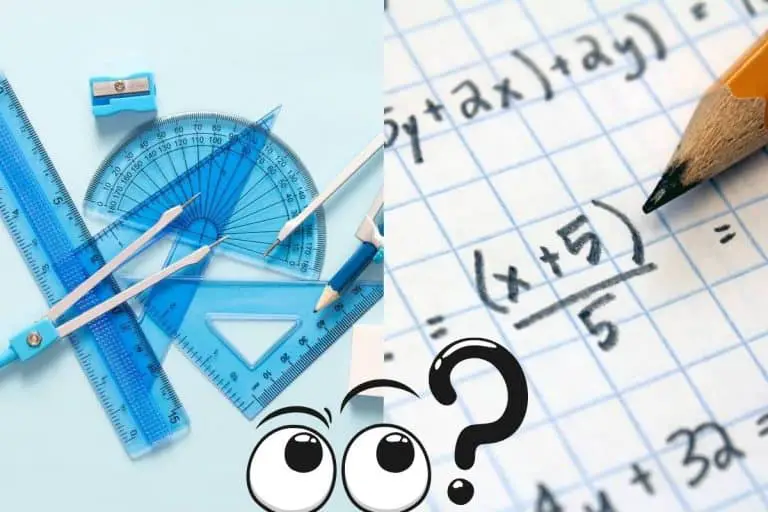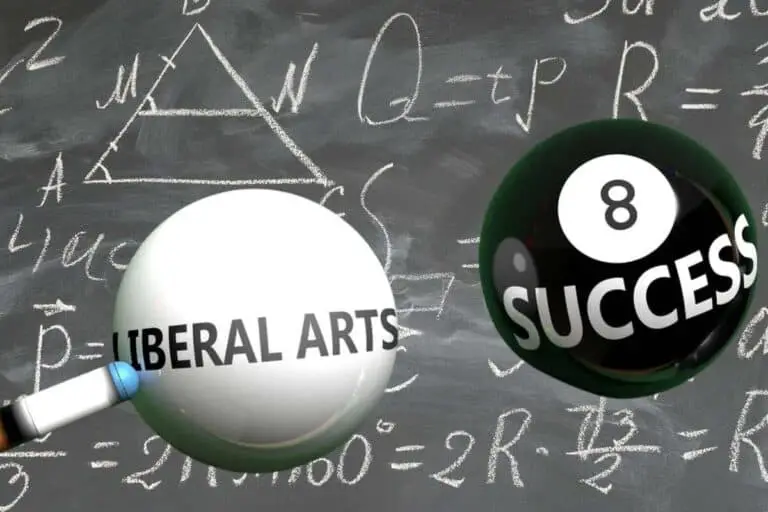Trigonometry vs. Calculus: Differences and Difficulty of Each
Deciding whether to take trigonometry or calculus can be difficult, but by understanding the basics of each field, you can make a well-informed choice about your future.
Trigonometry is the study of relationships between static shapes and angles, whereas calculus is the study of the change of objects in motion, represented by dynamic curves. Both can be difficult to learn, but calculus is generally considered a more advanced discipline.
Read on to learn more about the differences between trigonometry and calculus. This article will discuss what they cover, the difficulty of each, and what jobs you can expect to prepare for in each branch of mathematics.

How Are Trigonometry and Calculus Different?
Trigonometry and calculus are both pillars of mathematics that play key roles in our understanding of the universe.
In many ways, calculus builds on trigonometry.
Trigonometry is an earlier, more basic form of mathematics concerned with the study of static objects and straight-sided shapes, broken down into triangles. Calculus, however, is an advanced form of mathematics focused on the nature of changes and dynamic curves.
| Trigonometry | Calculus |
| The study of relationships between angles and sides of triangles. Serves as the basis for geometry, the study of straight-sided shapes. Invented in Ancient Greece (3rd century B.C.). | The study of how objects move and change. Serves as the basis of the study of subatomic particles, body cells, electricity, and more. Invented by Gottfried Leibniz and Isaac Newton in the 17th century. |
It usually helps to learn trigonometry first, as it teaches you how to understand basic concepts and relationships that you can then develop further in your study of calculus.
Core Concepts of Trigonometry
The key shape in trigonometry is the triangle. This discipline is based on the relationship between the three sides of a triangle with a right angle. From there, you can explore realms of geometry by breaking down shapes into the right-angled triangles that they contain.
In trigonometry, you will examine the sine, cosine, and tangent of a given angle in a triangle, as each of these represents a ratio of one side length to another side length.
Core Concepts of Calculus
Calculus is, at its core, the study of rates of change. In this discipline, you will learn how to calculate the rate a curve changes at one particular instant.
This value is known as the derivative, and it is the basis for differential calculus.
You will also learn how to calculate the area underneath a curve through what is known as integral calculus. Integral calculus uses the concepts of slope and known rates of change to predict the area, length, and total volume of a shape.
Sources: ThoughtCo and LiveScience
Trigonometry vs. Calculus: Which Is Harder?
If you have no background in mathematics, calculus will likely appear harder than trigonometry. It focuses on how the nature of objects changes when they are in motion, and it’s difficult to understand the concepts without first having a foundational understanding of trigonometry, geometry, and algebra.
Trigonometry also relies on knowledge of algebra, but it is a more basic form of mathematics that requires less background to understand.
It may challenge learners, but you can learn it at an earlier age with less experience.
Don’t be mistaken though, trigonometry can be really hard for some students too.
What Jobs Does Trigonometry Prepare You For?
Trigonometry prepares you for architecture, flight engineering, crime scene investigation, and marine biology. It is a fundamental discipline in mathematics. Many careers require that you understand trigonometry to apply it in real-world situations in these disciplines.
Some career fields with clear and direct relationships to trigonometry include:
- Trigonometry is used in architecture to calculate structural load, roof slopes, sun shading, light angles, and more.
- Surveying requires the use of trigonometry to measure lots, fields, and areas.
- Physics relies on trigonometry to analyze vector components, field strengths, and dot and cross products.
- Flight engineering requires trigonometry in the calculation of wind impacts on aircraft speed. Here, the speed could be represented as a static length of a rectangle, with the angle being the angle of the wind against the plane and the third side being the actual trajectory of the plane.
- In crime scene investigation, trigonometry is useful for determining the trajectory of a projectile or an analysis of a car accident.
- In marine biology, trigonometry is useful for determining how light and water depth impact the photosynthesis of algae.
Source: Mathnasium
What Jobs Does Calculus Prepare You For?
Calculus prepares you for animation, chemical engineering, and software development. Much of physics builds on calculus, including the study of heat, light, harmonics, and acoustics. Calculus is also used in geography, computer programming and A.I., and robotics.
Calculus is even useful in the design and production of ships.
In the field of economics, calculus is used to predict supply, demand, and profit potential. It allows you to calculate the elasticity of demand at any point on an ever-changing curve using the concept of a derivative.
The following are career fields that require the study of calculus:
- In animation, calculus is used to analyze the behavior of three-dimensional figures in a changing environment to make animations as realistic as possible.
- Chemical engineering requires knowledge of calculus to solve problems related to energy transfer, thermodynamics, and heat and mass transport.
- Environmental engineering requires knowledge of calculus to model and evaluate pollution problems as they relate to public health.
- In electrical engineering, calculus is used to analyze, design, and test electrical systems and their components.
- Aerospace engineering requires calculus to create models of the strengths and weaknesses of aircraft, satellites, and other aerospace equipment.
- Operations research engineering professionals use calculus along with statistical tools to help organizations make decisions about cost-effective solutions.
- Software development uses calculus in the formulation of complex computer programs.
- In mathematics, professionals use calculus to develop models of abstract ideas that can be applied across many different disciplines.
- Economics has a strong basis in calculus, and professionals in the field use calculus to study unemployment rates, interest rates, inflation, and other calculations of interest.
- Actuarial sciences depend on calculus in risk assessments and insurance premium calculations.
- In astronomy, professionals use calculus as a part of the software they use to simulate the behavior of light, gravity, energy, and matter.
- Insurance underwriting requires calculus in the prediction and assessment of risk as it relates to insurance policies.
Final Thoughts
Trigonometry and calculus are both difficult branches of mathematics, but trigonometry is a more basic, fundamental discipline, where calculus covers more advanced concepts. Both have countless applications in the real world, including many different careers. Engineering, insurance, and animation are just a few of the math-based disciplines you can choose.







